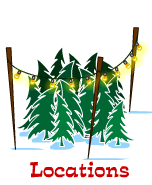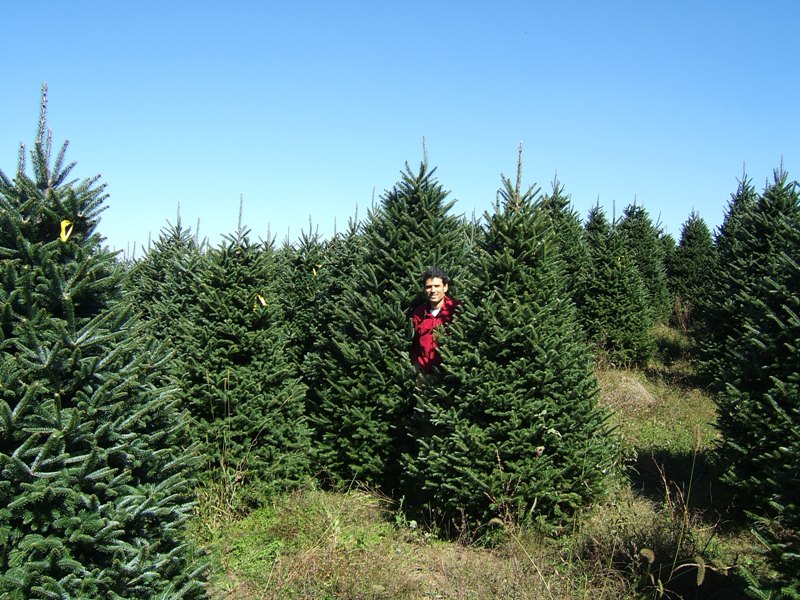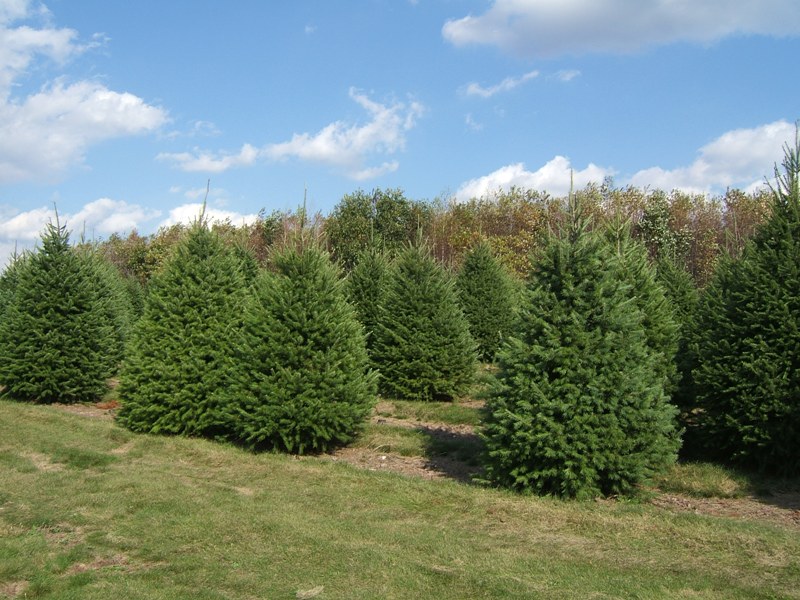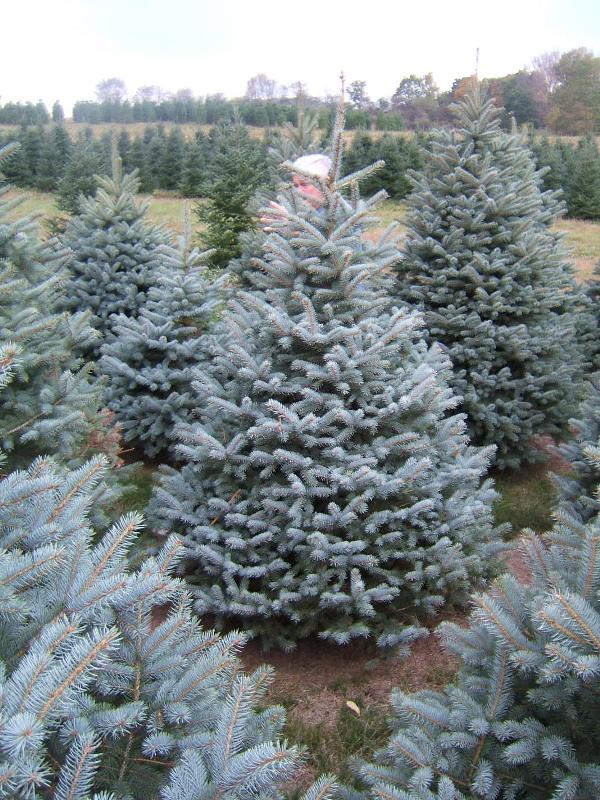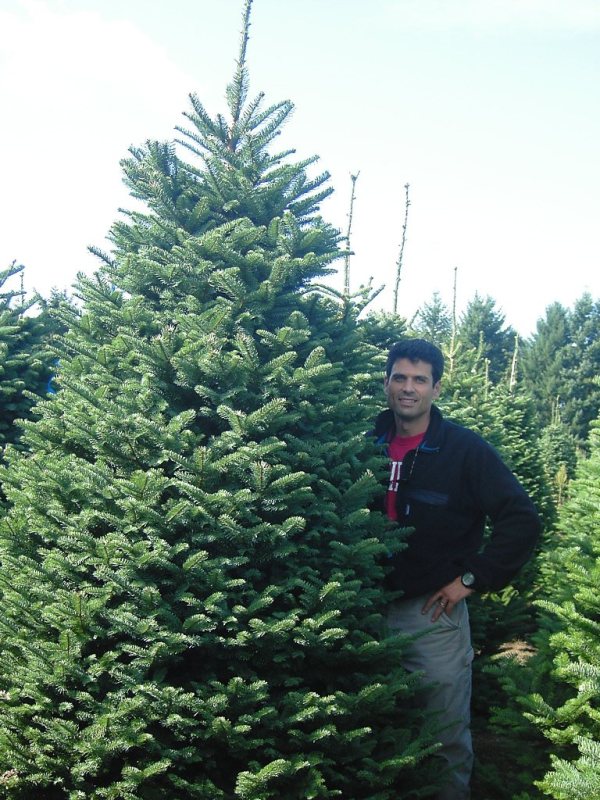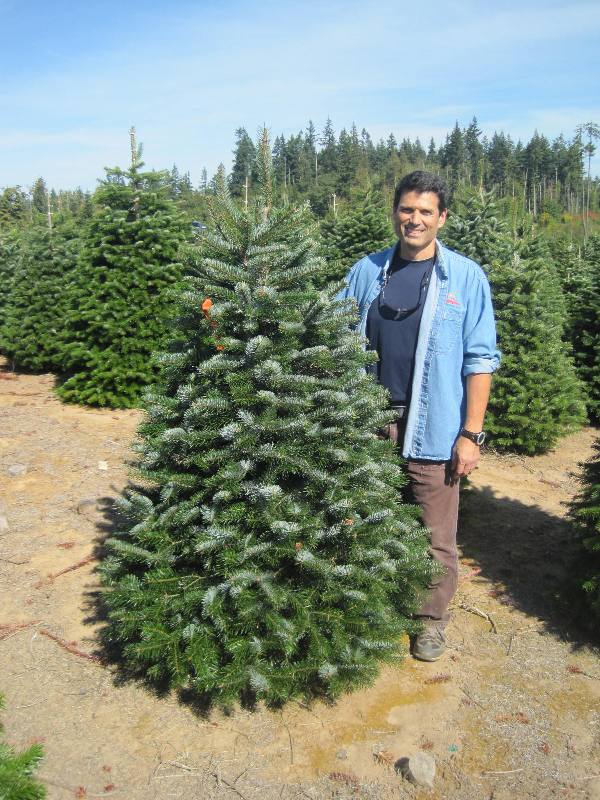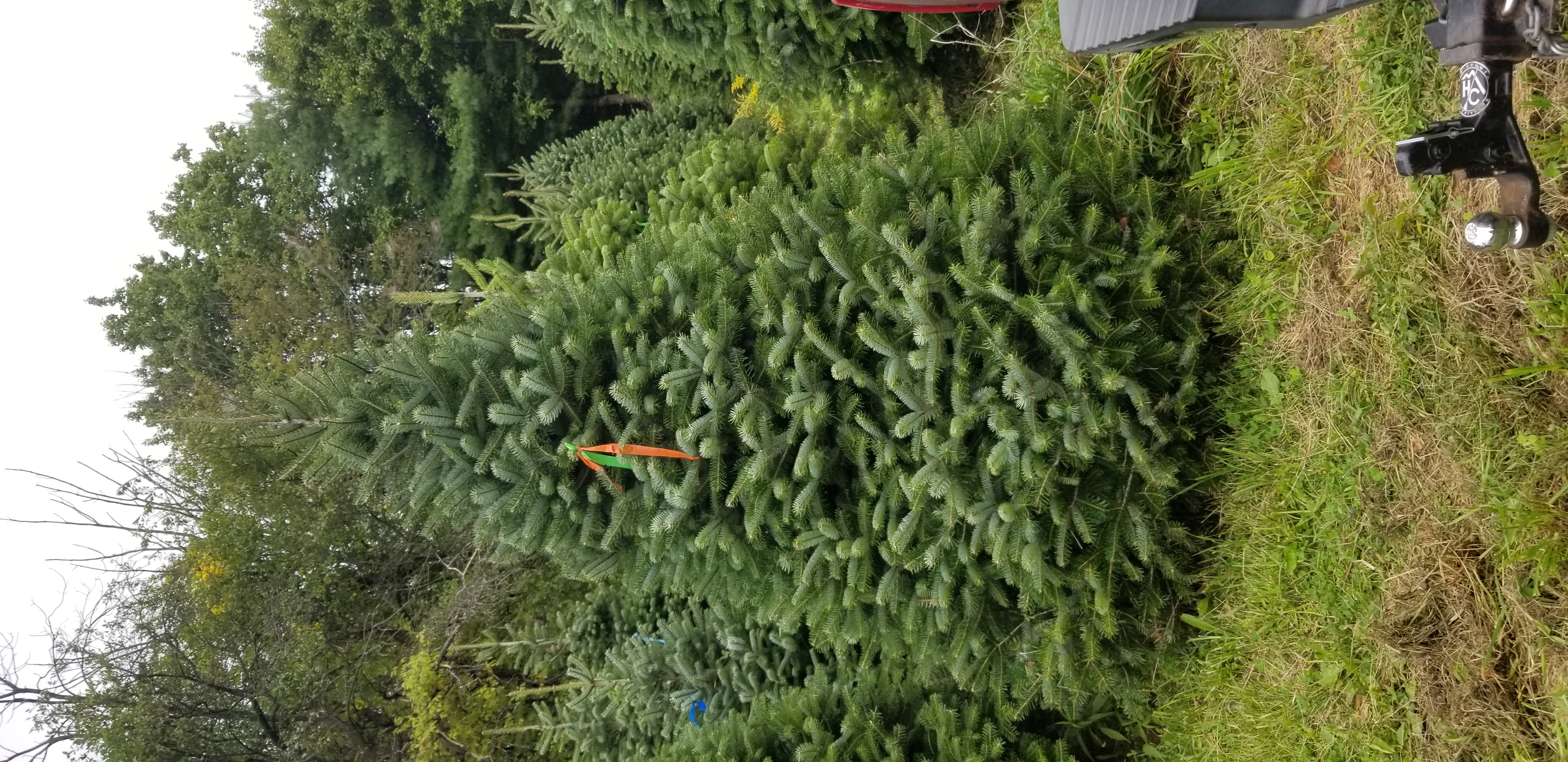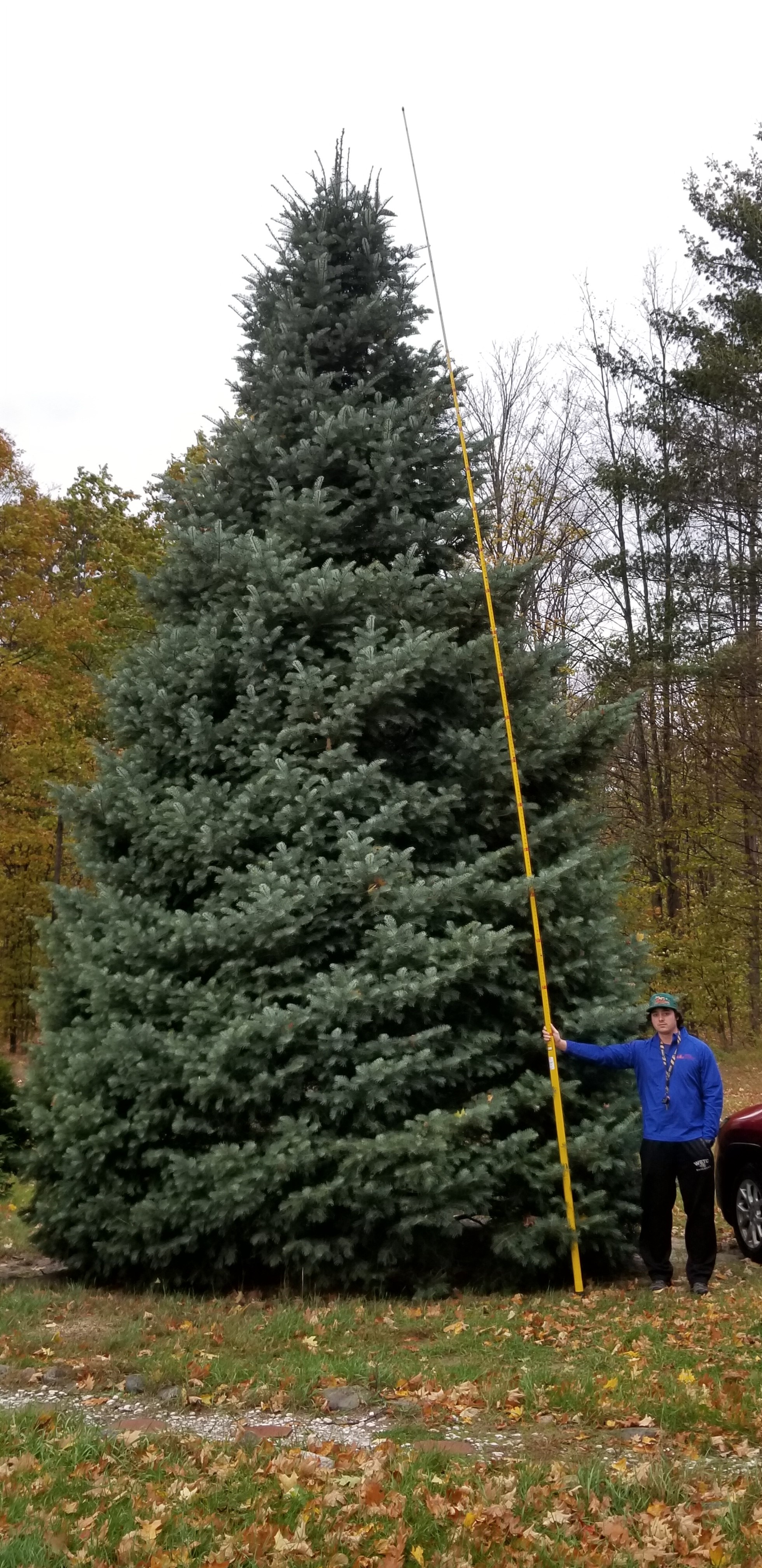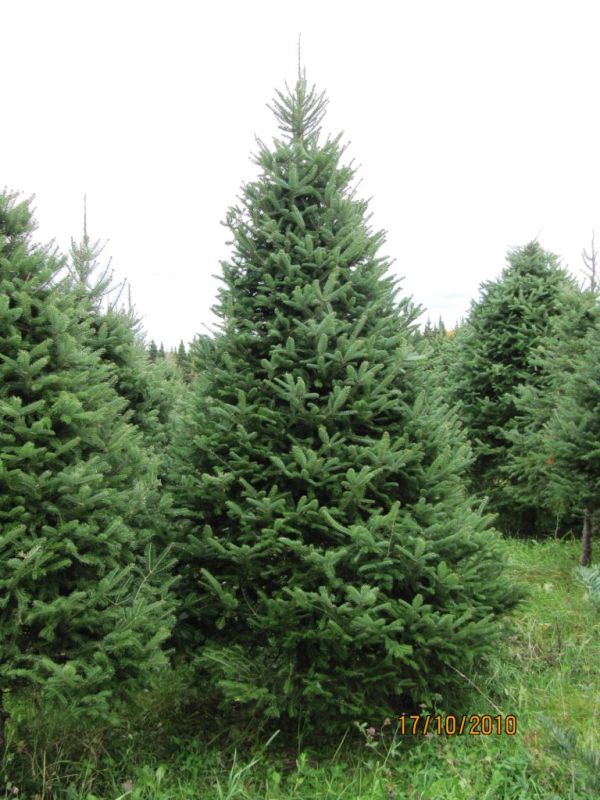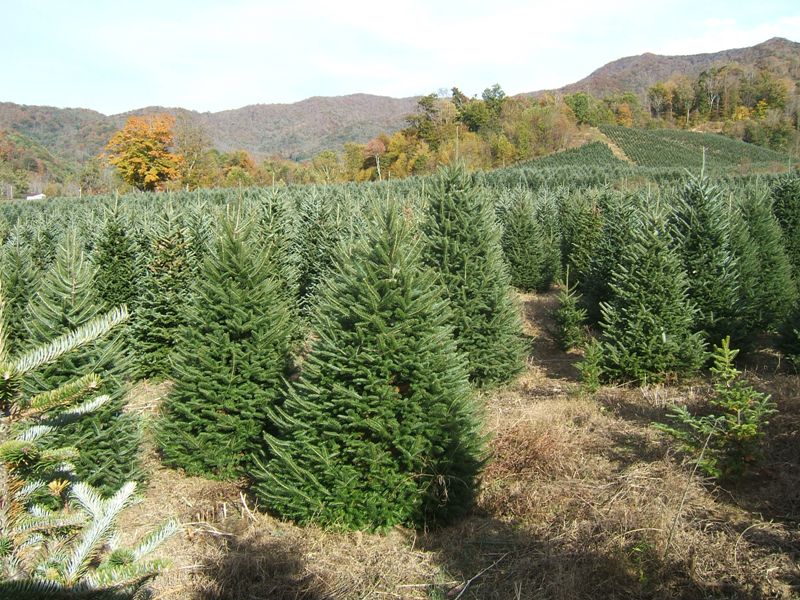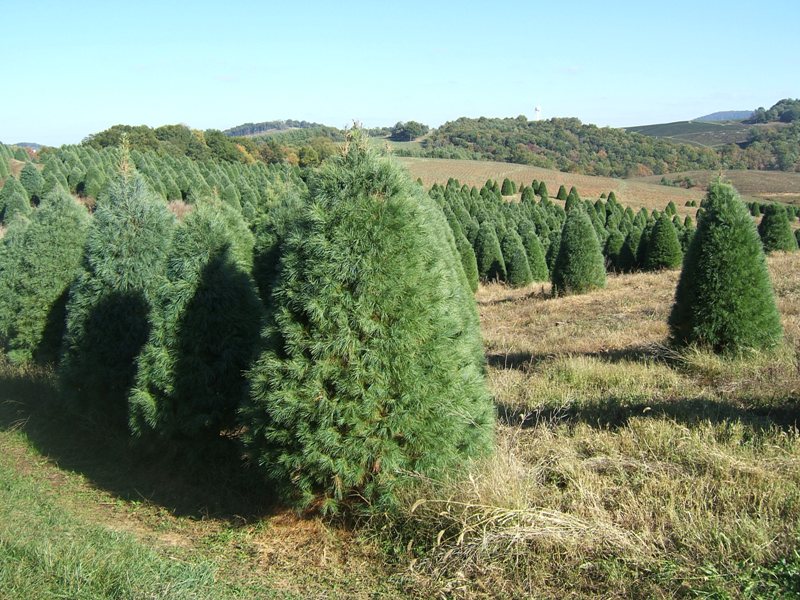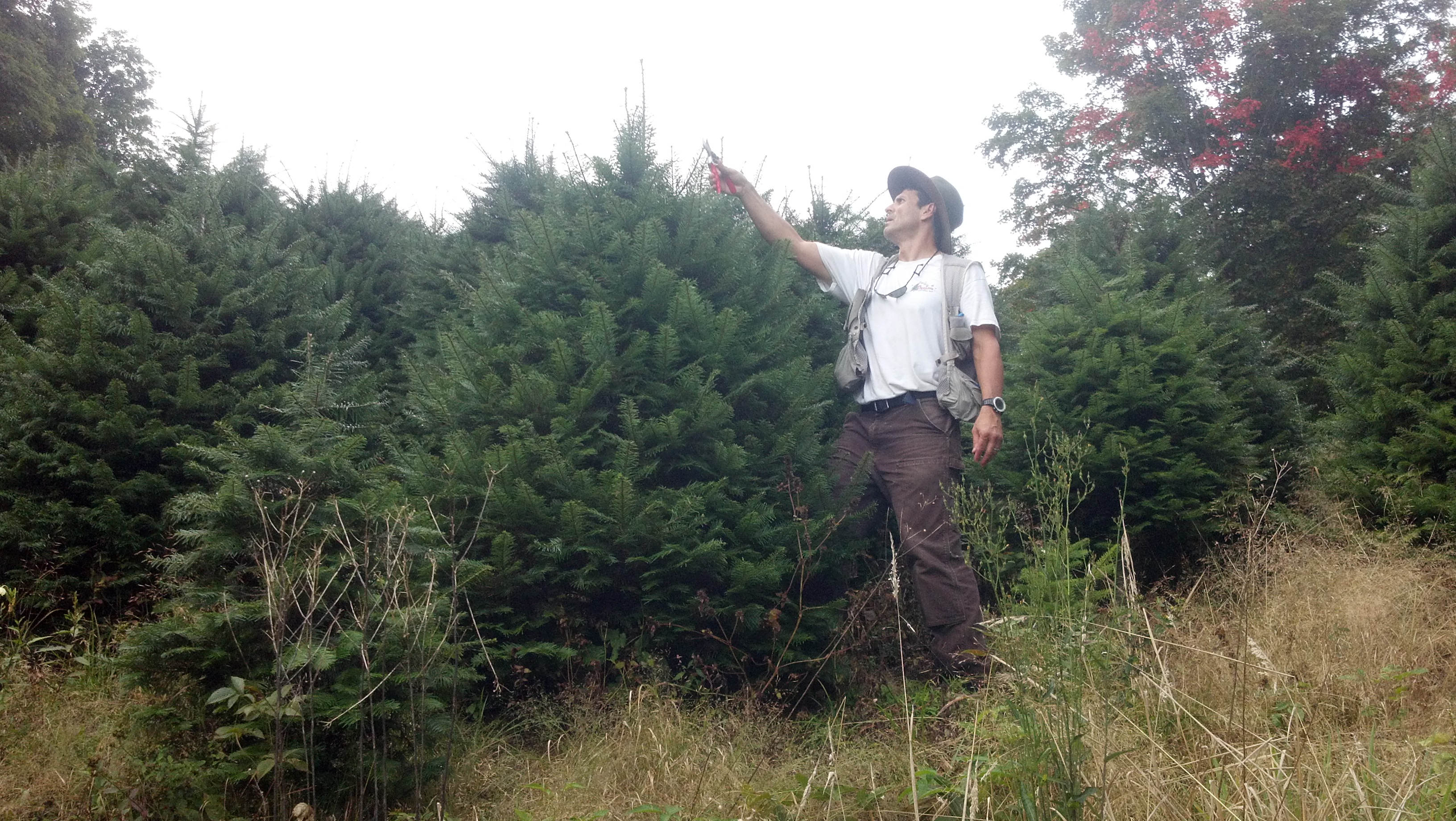Fresh, Fragrant, Farm Grown
Nothing says Christmas more than a real Christmas tree! Did you know that: -Another tree is planted for each tree harvested... -Christmas trees are environmentally friendly and provide habitat for wildlife, produce oxygen and are recyclable... -Christmas trees are professionally grown on a family farm...
Fraser Fir
This tree has become a Christmas favorite in recent years, thanks to the pretty contrast between the silver on the underside of the needles and the dark green on top. No worries about being pricked - the three-quarters-inch-long needles are flat, have blunt ends, and are soft to the touch. The Fraser Fir is said to have the best needle retention of all the trees, but farmers say needle retention is based more on how well you care for the tree. The Fraser Fir was named for a botanist, John Fraser, who explored the southern Appalachians in the late 1700's.
Big John's Frasers come from N. Carolina, Pennsylvania, W. Virginia, Virginia and Michigan.
Douglas-Fir
The inch-long needles are thin, pointed, and soft; they grow in two rows, as on the balsam, and stick out in different directions, giving the tree a beautiful, feathery appearance. Douglas firs are dark green or blue green, depending on their genetic makeup and the type of soil they were grown in. Douglas fir are liked for their dense bushy shape and fine soft green needles. They have a distinctive pine-like scent, and that fragrance seems to last through the entire Christmas season. Easily decorated, Douglas fir is able to support a large number of Christmas tree lights if you really like to light it up!
Big John's Douglas come from Pennsylvania and W. Virginia.
Blue Spruce
A beautiful tree that ranges in color from silvery blue to dark green, the Colorado blue spruce has needles 3/4 to 1 1/2 inches in length that grow "bottle brush" style on the branches. Because the needles are prickly, the Colorado blue spruce is often recommended to people who have cats. They won't try climbing it twice. The strong branches can support heavy ornaments without sagging. "Shiners"--shown in the photo to the right--are Blue Spruce that have a light blue color and are the most sought after of the Blues.
Big John's Blue Spruce come from Pennsylvania, N. Carolina, and Michigan.
Noble Fir
Nobles are native to the Siskiyou Mountains of northern California and the Cascade and Coastal ranges of Oregon and Washington. It closely resembles the California red fir (Abies magnifica var. magnifica), commonly used as an uncultured tree called "silver tips" in the California fresh tree market, and the shasta fir (Abies magnifica var. shastensis) that is grown in some Pacific Northwest Christmas tree plantations. It grows in middle- to upper-elevation coniferous forests and is often associated with Abies amabilis (or "silver fir") and other conifers. The best stands are found in moist, middle elevation areas with deep, rich soils. Middle-elevation stands are usually more open than low-elevation forests and occur on poorer, thinner, rockier soils in areas more frequently disturbed by wind, snow and sometimes fire. In the wild, the trees are tall, beautifully symmetrical and grow to over 200 feet in height. The bark is smooth with resin blisters when young and changes to brownish-gray plates with age. The needles are roughly 4-sided (similar to spruce), over 1 inch long, bluish-green but appearing silver because of 2 white rows of stomata on the underside and 1-2 rows on the upper surface. The needles are generally twisted upward so that the lower surface of branches are exposed.
Big John's Nobles come from Washington.
Nordmann Fir
Nordmann or Caucasian Fir, is probably the handsomest of all in the Abies genera. Originating in the Caucasus Mountains of Asia Minor, this evergreen beauty may attain heights of 200 feet or more in the wild. Under cultivation, Nordmann Fir may grow up to 60 feet tall with a spread of approximately 25 to 30 feet. The flattened, soft, black green needles, 2 mm wide by 0.5 mm thick and glossy dark are borne on symmetrically arranged branches exhibiting a perfectly pyramidal specimen evergreen.
Big John's Nordmann come from Washington, N. Carolina and Pennsylvania.
Turkish Fir
The Turkish fir (Abies bornmuelleriana), and its close relative the Nordmann Fir (of which the Turkish is a subspecie), are the most popular Christmas trees in Europe, due in part to their exquisite beauty, sturdy branches, deep green and silvery under-needle color, soft foliage and excellent needle retention. While not quite as aromatic as some of the other firs we bring in, the waxy texture of its needles may be good for folks with allergies as this quality helps restrict fragrances.
Big John's Turkish Fir are grown in Pennsylvania.
Concolor Fir (White Fir)
The National Christmas Tree Association notes that "Needles are usually 1/2 to 1 1/2 inch long, pointed or notched at the tip, bluish-green.... As a Christmas tree, white fir has good foliage color, a pleasing natural shape and citrus aroma, and good needle retention."
Big John's Concolor come from N. Carolina, Pennsylvania and Michigan.
Balsam Fir
The Balsam Fir is a beautiful dark-green color with airy, flexible branches that may not be able to hold heavy ornaments.The needles are 3/4" to 1 1/2" short, flat, long lasting needles that are rounded at the tip; nice, dark green color with silvery cast. It has an attractive form, it holds its needles well, and gives off a pleasant fragrance for your home. Named for the balsam or resin found in blisters on bark. Resin is used to make microscope slides and was sold like chewing gum; used to treat wounds in Civil War.
Big John's Balsam come from New Brunswick, Canada.
Canaan Fir (ltd quantity in 2021)
Scotch Pine
Approximately 1 in. in length, the needles don't fall off even if dry, providing excellent needle retention. The color is a bright green. The most common Christmas tree in the U.S., the Scotch Pine has an excellent survival rate, is easy to replant, has great keepability and will remain fresh throughout the holiday season.
Big John's Scotch come exclusively from northern Michigan.
White Pine
Branches from the White Pine are often used in garlands, wreaths, and centerpieces due to their long, feathery, soft blue- green needles. Though it is a beautiful tree, branches can be a bit too flexible to support heavier decorations. The White Pine has little or no fragrance, making this tree to cause less allergic reactions as compared to more fragrant trees. The White Pine needles last a long time when properly watered.
Big John's White Pine come from Michigan and N. Carolina.
Grand Fir (not available in 2023)
The grand fir is one of the tallest firs, reaching heights of 300 feet. It is easily distinguished from other Pacific Northwest firs by its sprays of lustrous needles in two distinct rows. They are usually horizontally spread so that both the upper and lower sides of the branches are clearly visible. The needles are 1 to 1 1/2 inches long with glossy dark green tops and two highly visible white lines of stomata on the undersides.
Big John's Grands come from the mountains of western N. Carolina, and on occasion, Washington.

